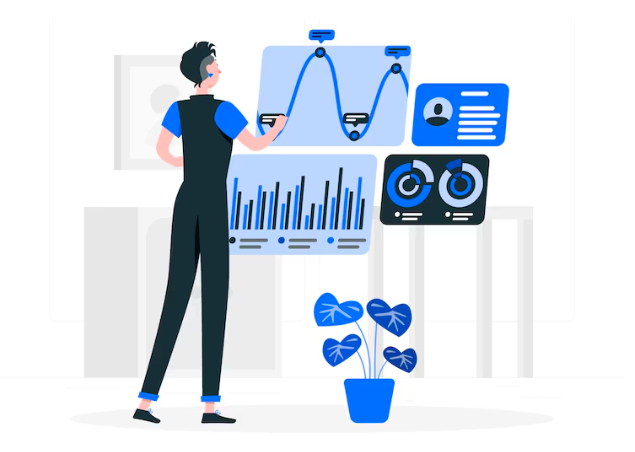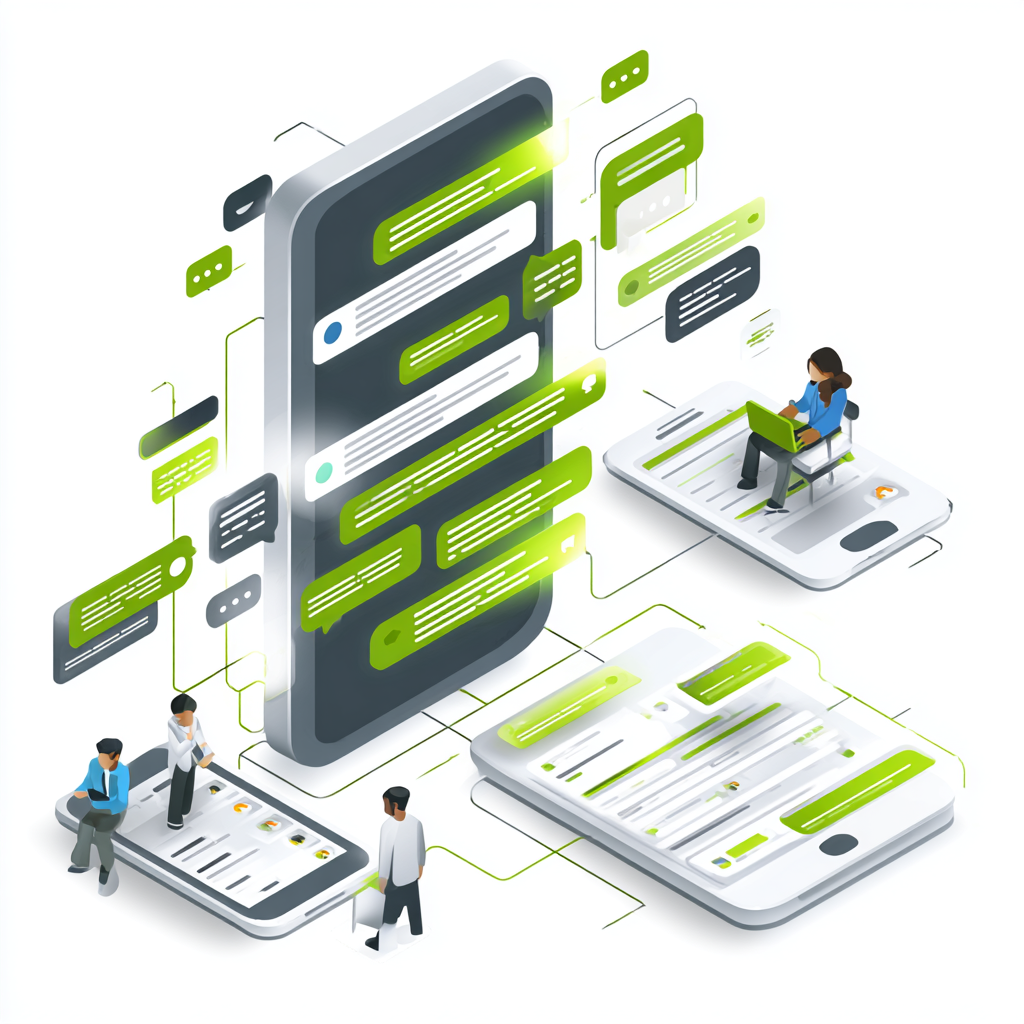Consumers have countless choices; negative interactions can direct them to a competitor. Delivering an exceptional customer experience is no longer just an added advantage but a strategic necessity for survival and growth. But how do businesses know what their customers truly want, feel, and expect? The answer lies in data analysis. By using data analytics to understand customer behavior, preferences, and pain points, companies can deliver highly personalized, efficient, and meaningful experiences. This shift from reactive to proactive customer service is powered by real-time insights, predictive modeling, and deep customer segmentation, all made possible through data analysis. In this article, we will explore data analysis in customer experience, why it is vital for modern businesses, and how different industries leverage it to build loyalty and drive growth.
What is data analysis in customer experience?
Data analysis in customer experience refers to the systematic process of collecting, organizing, and interpreting data from every customer touchpoint. These touchpoints could include:
- Social media interactions
- Customer service calls or chats
- Product reviews and feedback
- Website or app usage data
- Online surveys and Net Promoter Scores (NPS)
- Purchase history and browsing behavior
By analyzing this data, businesses can uncover hidden patterns, preferences, and challenges across the customer journey. The goal is to understand what customers are doing and why so brands can design resonating experiences. In simple terms, data analysis gives businesses a powerful lens through which to view customer behavior, enabling more thoughtful decisions, proactive solutions, and higher customer satisfaction.
Why is data analysis in customer experience important?
Let’s dive into the key benefits of integrating data analysis into your customer experience strategy:
1. Personalization at Scale
Customers want to feel seen and understood. Generic offers and irrelevant emails often do more harm than good. With data analysis, companies can track:
- Past purchases
- Browsing patterns
- Demographics
- Engagement behavior
This insight allows for personalized marketing campaigns, tailored product recommendations, and content that speaks directly to the user’s needs. For example, Amazon’s “You might also like” section is driven entirely by data analytics and contributes significantly to their sales.
2. Predictive Insights for Proactive Engagement
Historical data trends help businesses predict future customer behavior. For instance, if a subscription-based SaaS company notices that customers who don’t log in within the first week of signup often churn, they can proactively send reminders or onboarding help. This predictive analytics helps businesses prepare, intervene, and engage before issues arise, improving retention and reducing revenue loss.
3. Better and faster customer support
Businesses can identify frequent pain points by analyzing common keywords in support tickets, chat logs, and complaint forms. This insight can lead to:
- Better training for support agents
- Creation of self-help resources (FAQs, knowledge bases)
- Early fixes for product or service flaws
4. Higher customer retention rates
Loyal customers are the backbone of sustainable growth. Customer retention is often more cost-effective than acquisition, and data plays a huge role in keeping existing customers happy. Analytics can help you spot when a customer is disengaged, has stopped opening emails, or has declined purchase frequency. With this knowledge, businesses can trigger win-back campaigns, exclusive offers, or feedback requests to re-engage them.
5. Improved product and service design
Understanding what customers love or dislike about a product informs future development. Businesses can use sentiment analysis from reviews, social media mentions, and survey feedback to enhance product features, introduce new services, or fix what’s broken.
Types of customer data used for analysis
Companies must gather and organize data from various sources to get the most out of data analysis in CX. Here are the main types:
1. Demographic data
- Age, gender, income level, and location
- Helps in segmentation and targeting
2. Behavioral data
- Click patterns, pages visited, cart abandonment, time on site
- Reveals what actions customers take
3. Transactional data
- Purchase history, frequency, average order value
- Useful for loyalty programs and upselling
4. Feedback data
- Survey results, star ratings, and NPS scores
- Captures subjective experience
5. Interaction data
- Chatbot conversations, customer service transcripts
- Sheds light on problems and supports quality
How businesses use data analysis to improve customer experience
Let’s look at how companies across industries are applying data analysis in their CX strategies:
1. E-commerce: Personalized shopping experience
Online retailers like Amazon, Jumia, and ASOS analyze browsing history, cart activity, and past purchases to make personalized product recommendations, offer dynamic pricing, and send cart abandonment reminders. They also track delivery feedback to enhance logistics and reduce returns.
2. Telecom: Smarter plans and reduced churn
Telecom companies collect usage data on calls, data consumption, app preferences, and complaint frequency. This allows them to:
- Offer personalized bundles
- Send alerts about unusual activity
- Resolve network issues proactively
3. Banking & Fintech: Enhanced user experience
Banks and digital finance platforms analyze app usage behavior, transaction patterns, and support tickets to:
- Improve user interfaces
- Detect fraud early
- Offer custom savings or investment tips
They also use customer feedback to redesign app navigation and reduce friction during sign-ups or transfers.
4. Hospitality: Creating memorable guest experiences
Hotels and travel platforms collect guest preferences, feedback, and booking history to:
- Offer room upgrades to returning guests
- Recommend destinations or packages
- Tailor services based on previous stays
Data helps them predict peak booking times, manage demand, and enhance service quality.
5. SaaS & Tech: Proactive onboarding and support
Software companies monitor user interactions after signup. If a user struggles with onboarding, automated prompts, tutorials, or live support can be triggered. This approach improves user adoption, reduces churn, and boosts long-term satisfaction.
Best practices for using data in customer experience
Data alone is not enough. It must be accurate, ethical, and actionable. Here are a few best practices for using data analysis in CX:
- Prioritize data privacy: Always comply with data privacy regulations like GDPR or CCPA. Customers must trust that their data is secure and will only be used for their benefit.
- Break down data silos: Marketing, sales, support, and product teams must share customer data. A unified customer view ensures consistency across all touchpoints.
- Use the right tools: Customer data platforms (CDPs), CRM systems, and analytics dashboards make it easier to collect, visualize, and act on data. Popular options include Google Analytics, Tableau, HubSpot, and Salesforce.
- Combine quantitative and qualitative data: Numbers tell you what is happening, but feedback explains why. Combine both to make more informed decisions.
- Train teams on insights: It is about collecting and acting on insights. Train your teams to understand and apply data to their daily customer interactions.
Key metrics to track in customer experience analytics
To measure success, businesses should track:
- Customer Satisfaction Score (CSAT): how satisfied customers are after an interaction
- Net Promoter Score (nps): willingness of customers to recommend your brand
- Customer Effort Score (CES): How easy it was for a customer to resolve an issue or make a purchase
- Churn rate: percentage of customers who stop using your service
- Customer Lifetime Value (CLV): the total worth of a customer over their lifecycle
- First Response Time (FRT) and resolution time: efficiency of your support system
The future of customer experience is data-driven
As technology evolves, customer experience (CX) is becoming more innovative and proactive, powered by data, AI, and machine learning. Predictive models can forecast customer needs, helping businesses act before problems arise. For example, if data suggests a customer is likely to churn, companies can offer timely incentives to retain them. AI-powered chatbots handle routine queries instantly, delivering faster support while freeing human agents for complex cases. When backed by data, these bots can offer personalized responses based on a customer’s history and preferences. Voice analytics is another powerful tool. Companies can spot frustration or satisfaction in real time by analyzing tone and emotion during calls, improving issue resolution, and customer care. Real-time analytics also allow businesses to react quickly to customer behavior, such as launching targeted offers when a product sees a spike in interest. As innovations like IoT, voice assistants, and augmented reality grow, data will become more integral to creating seamless, personalized experiences.
Key takeaway: The future belongs to companies that use data to understand customers and anticipate, personalize, and enhance every step of the journey.
Turning insights into loyalty and growth
Data analysis in customer experience is not just a trend but a game-changer. Businesses can transform how they engage with customers by effectively collecting and analyzing the correct data. From personalized recommendations to proactive support, data helps companies create experiences that lead to greater satisfaction, deeper loyalty, and sustainable growth. The key lies in taking action. Do not just gather data; use it to solve problems, anticipate needs, and continuously improve every touchpoint. When customers feel understood and valued, they reward you with their loyalty, and that’s the ultimate competitive advantage.





